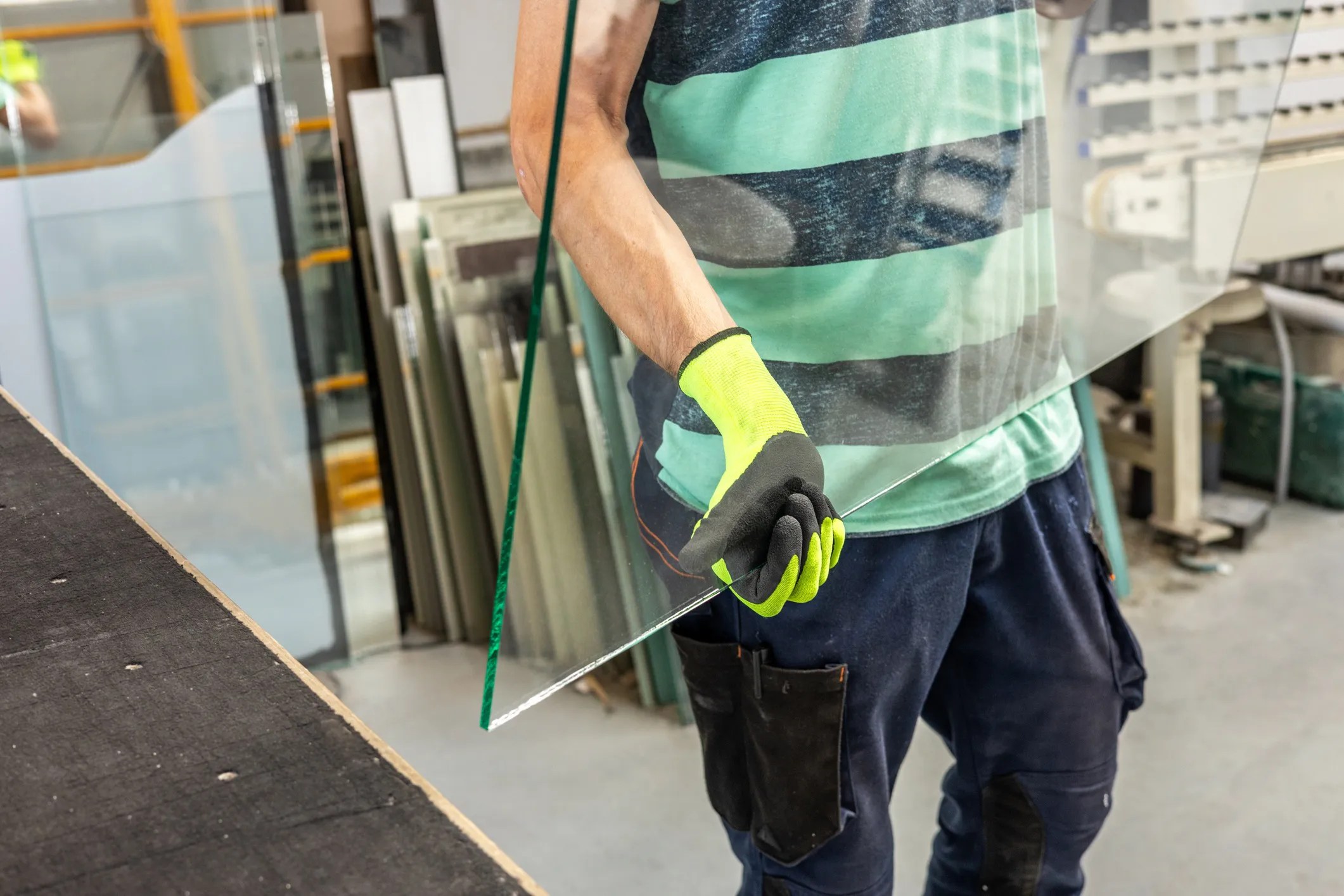ANSI/ISEA 105‑2024: Hand Protection & Cut Level Ratings

Potential hazards to hands and arms include skin absorption of harmful substances, chemical or thermal burns, radiation, electric shock, bruises, abrasions, cuts, punctures, fractures, or amputations. The nature of the hazard and the operation involved will affect the selection of the appropriate protective equipment, which includes gloves, finger guards, and arm coverings. ANSI/ISEA 105-2024: American National Standard For Hand Protection Classification addresses the classification and testing of hand and arm protection for specific performance properties related to chemical and industrial applications.
When Is Personal Protective Equipment (PPE) Used for Hand Protection?
Selection of appropriate personal protective equipment (PPE) is based on the performance characteristics of the glove in relation to the tasks to be performed. Hand protection must be selected and used when personnel may be exposed to certain hazards, such as:
- Harmful dry or liquid substances (e.g., strong acids/bases, toxic or corrosive materials, organic solvents, and radioactive materials) that can be absorbed through the skin or can cause skin irritation, chemical burns, or similar conditions.
- Tools, equipment, or materials that can cause cuts, lacerations, punctures, fractures, amputations, or abrasions.
- Materials or agents that can cause thermal burns or expose personnel to harmful temperatures.
- Blood or other potentially infectious agents.
- Live electrical systems or components.
Key Changes in the 2024 Edition of ANSI/ISEA 105
ANSI/ISEA 105-2024 is the sixth edition of the voluntary industry consensus standard on hand and arm protection classification that was first published in 1999. Several new concepts have been introduced into this 2024 edition of this American National Standard, such as:
- The scope now covers both gloves and sleeves (i.e., “arm protection”), extending beyond hand protection alone.
- Inclusion of a new pentagon pictogram to display cut, abrasion, and puncture resistance ratings together in a single, standardized label. Positioning within the pentagon specified (in Section 8.2 Specific Marking) is as follows:
- Cut: Top center
- Abrasion: Left
- Puncture: Right
- Specific language for demonstrating conformity to the claimed classifications for the performance properties covered, referencing ANSI/ISEA 125-2021 (in Section 7 Report of Test Data).
- Clarifications (in Section 6.1.4 Abrasion Testing) to abrasion testing, both in the pass/fail criteria for of leather gloves and sleeves and test execution.
- Updates to conductive heat resistance classifications (Section 6.3.3 Conductive Heat Resistance) to include a range of temperatures when performing the testing and contain additional prescriptive criteria for determining such classification.
- Dexterity and anti-vibration properties have been deleted as being specifically covered by the standard but are referenced in the Appendix E discussion (pages A-10) on other factors for consideration.
- Referenced test methods have been updated throughout the standard to reflect the state of the art in materials performance and technology and to harmonize with other existing standards. More detail on the test methods can be found in Appendix C (pages A-5).
What Is ANSI/ISEA 105-2024?
ANSI/ISEA 105-2024 addresses the classification and testing of hand and arm protection for specific performance properties related to chemical and industrial applications. Hand and arm protection includes gloves, mittens, partial gloves, sleeves, or other items covering the hand or a portion of the hand that are intended to provide protection against or resistance to a specific hazard.
The standard does not address protection from electric shock, ionizing or non-ionizing radiation, every type of thermal exposure and harmful temperature extreme, and every type of exposure to chemicals, biological agents, or other hazardous substances. ANSI/ISEA 105-2024 also does not address protection for welding, emergency response applications, or fire fighter applications.
Hand and Arm Protection Classification
ANSI/ISEA 105-2024 provides a uniform system for classifying the performance levels of gloves and arm protection based on factors, including:
- Mechanical Protection
- Cut Resistance
- Puncture Resistance
- Hypodermic Needle Puncture Resistance
- Abrasion Resistance
- Chemical Protection
- Chemical Permeation Resistance
- Chemical Degradation Resistance
- Heat and Flame Protection
- Ignition Resistance and Burning Behavior (or After-Flame Time)
- Heat Degradation Resistance
- Conductive Heat Resistance
The information from this testing and classification can be used to help users to select appropriate hand protection.

ANSI/ISEA 105: Hand Protection & Cut Levels Explained
ANSI/ISEA 105-2024 outlines a set of glove performance properties that are tested and rated to help users select the right hand protection for specific hazards. These properties are measured using standardized test methods, and each is assigned a performance level (e.g., 1–9 for cut resistance).
Understanding Cut Levels (A1–A9)
Essentially, ANSI/ISEA 105-2024 uses a 9-level scale (A1-A9) to indicate how well a glove can withstand a blade cut. Higher levels (e.g., A7, A8, A9) signify greater cut resistance. For example, an A1 glove might withstand up to 200 grams of force, while an A9 glove can withstand over 6,000 grams.
Hand Protection Classification in ANSI/ISEA 105
ANSI/ISEA 105-2024 states that gloves should be classified according to their resulting performance when tested. Such classifications can assist employers and product users in the appropriate specification and selection of protective gloves and sleeves for specific workplace exposures, as part of regulatory compliance.
Where the material in the glove varies, testing of the intended resistance area should be performed. End-users should be notified regarding the varying performance levels of these products. The standard further details that manufacturers should be permitted to clearly report the classification of specific performance properties for different areas of the hand protection items.
Types of Protective Gloves
There are many types of gloves available to protect against a wide variety of hazards. The variety of potential occupational hand injuries, however, makes selecting the right pair of gloves challenging. Here are some categories of gloves:
- Leather, Canvas or Metal Mesh Gloves: protect against cuts, burns and punctures. Qualities include comfort, durability, dexterity, mild heat resistance, and abrasion resistance.
- Fabric Gloves: made of cotton or other fabric. They generally protect against dirt, chafing, and abrasions.
- Coated gloves: offer superior hand protection from wet environments where dexterity is important, but they provide minimal protection from physical hazards such as cuts, abrasions, or punctures.
- Insulating rubber gloves: used for protection against electrical hazards. Nitrile and natural rubber coated gloves are often used as substitutes for leather gloves.
- Chemical and liquid resistant gloves: used when working with chemicals with a high acute toxicity, corrosive materials in high concentrations, handling chemicals for extended periods of time, or immersing all or part of a hand into a chemical.
- Disposable gloves: best for one-time use situations as they are typically very thin and may tear or puncture easily. They provide the wearer with improved sensitivity and dexterity, but are less chemical resistant than standard chemical resistant gloves.
- Critical-environment gloves: used in applications that require extreme cleanliness, such as in the electronic, nuclear, and pharmaceutical industries
Why ANSI/ISEA 105 Matters for Safety
ANSI/ISEA 105-2024 helps employers select appropriate hand protection based on the hazards present in the workplace. Proper selection can help prevent cuts, lacerations, and other injuries. Ultimately, the standard helps assure that users can reliably compare the protection performance of gloves and sleeves across different brands and applications — improving safety, clarity, and compliance in hazardous work environments.
ANSI/ISEA 105-2016: American National Standard For Hand Protection Classification is available on the ANSI Webstore.
Please direct any technical questions relating to this American National Standard to the developer. You can find the contact information for all standard developing organizations (SDOs) here: Who to Contact for Standards Related Questions.







Is there a difference between the cut level being tested on the back of the hand compared to the palm of a cut-resistant glove?
One manufacturer is advertising that:
“Testing standards for cut resistance only require the palm of the gloves to be tested. For this reason, the ANSI cut level ratings assigned to cut-resistant gloves denote resistance levels for the palms only and not the rest of the glove.”
“While there are cut cut resistance test requirements for the rest of the glove, those that offer 360 degree of cut protection should be made clear by the manufacturer or have an icon similar to what we use for our cut-resistant gloves with 360 degree cut protection as shown.”
Does ANSI differentiate cut level protection of the palm through the ‘dipped’ area and the back of a cut resistant glove which is ‘not dipped’?